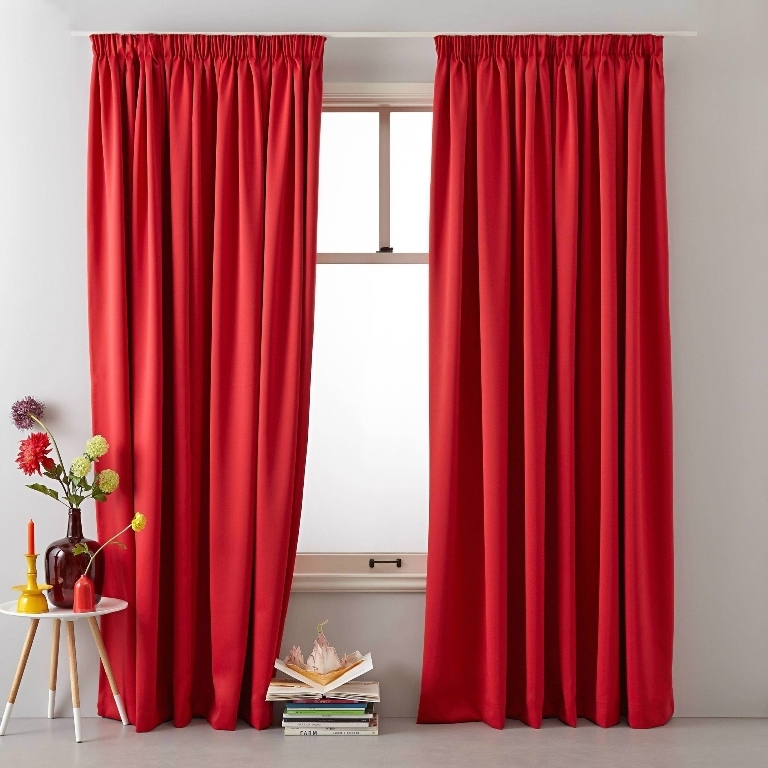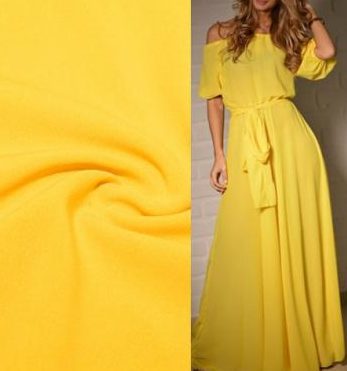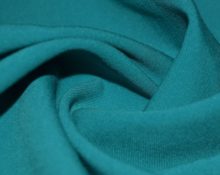The crepe material is pleasant to the touch and thin. It is durable and suitable for draping. Crepe products do not need to be ironed. They don't sit down. And “stretch” allows clothes to stretch.
What kind of fabric is this?
A feature of all crepe materials is the tight twisting of the threads several times. In order for the item to stretch, lycra or elastane is added during the production process.. The content of this additive varies from 2 to 25%.
The crepe base is cotton, silk, velvet and others.. Jeans are made from cotton, blouses and dresses are made from satin. Stretch velor and velvet are suitable for sewing evening dresses.
Important! When purchasing clothes made from crepe material, you need to read the label. Manufacturers often replace natural fabrics with artificial ones - polyester or acetate.

Characteristics
Silk, wool, cotton and artificial threads are used in production. Quality depends on the following properties:
- Lightweight and significant density of the material.It can be worn in the warm season. Suitable for sewing sweaters and thin dresses.
- Strength. Thanks to the thread twisting technology, crepe is not only one of the most wear-resistant materials, but also has an original structure and relief.
- Not subject to fading. The brightness of clothes remains for a long time.
- Stretch crepe has good stretch.
Any fabric has its advantages and disadvantages. Crepe has high strength and long service life. There is always the opportunity to purchase modified products, as the choice is huge. Such clothes will create a representative image. Of the minuses: requires constant care, expensive material. It is negatively affected by exposure to sunlight.
In order for a skirt, suit or dress to serve for a long time and not lose its original advantages, you need to take care of the product:
- use a gentle washing mode, and it is better to do it manually or take the clothes to the dry cleaner;
- iron the item using a thin cloth pad or gauze to avoid damage;
- cannot be dried in a natural environment; it is necessary to protect the crepe product from exposure to the sun.

What are the varieties?
During the production of stretch crepe, we use two main ways to add artificial fibers: mono- and bi-technology. In the first case, the fibers responsible for stretching the finished material are added either to the warp or to the transverse threads.
The second method (bi-stretch) involves adding them in both directions. As a result, the fabric stretches over the entire area, and not just along the length and width.
There are the following types of crepe with a stretching effect:
- cotton;
- atlas;
- velvet;
- satin;
- jacquard;
- wool.

Scope of fabric use
The properties of stretch crepe material allow it to be used for sewing various things:
- Cotton works great for making shirts and denim products. They do not wrinkle or fade. They do not need to be ironed; the shape of the item is restored on its own after washing if it is hung evenly.
- Stretch satin fits perfectly as lining for skirts and dresses, sewing trousers, underwear, shorts, bed linen and curtains. This fabric is often used in the manufacture of evening dresses.
- Velvet is recognized as a “royal” fabric. Velvet blouses, dresses, belts, skirts, jackets look luxurious. The base fabric is suitable for people with sensitive skin.
Stretch crepe is considered a high quality material. It requires proper care, but has important advantages: it does not wrinkle, does not lose color brightness, and remains durable for many years.


 0
0





